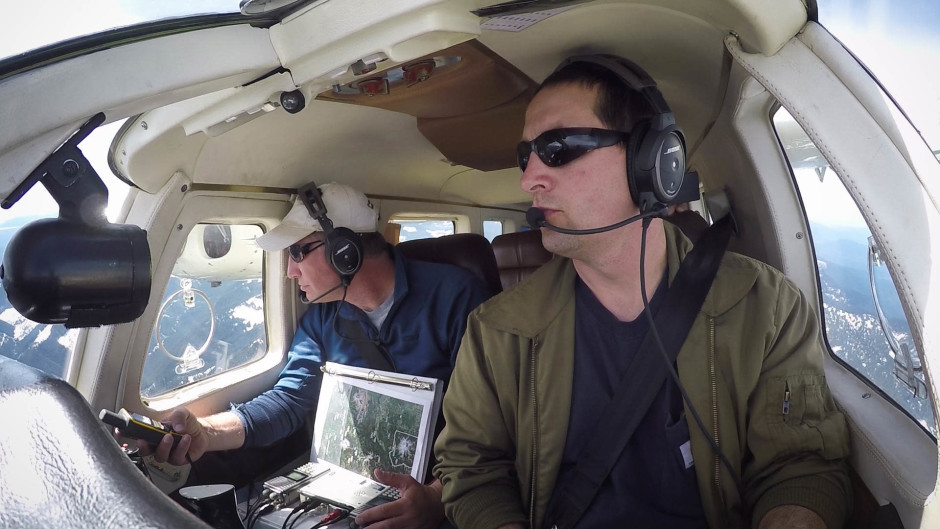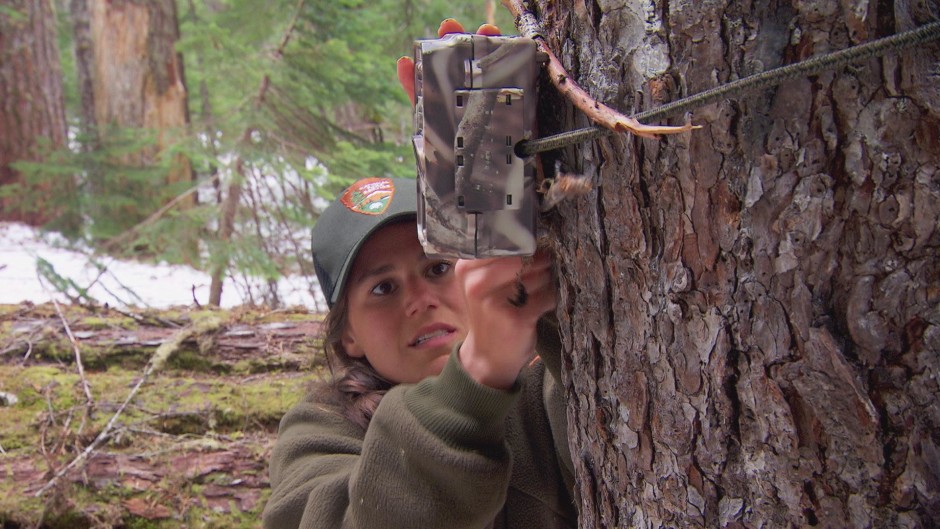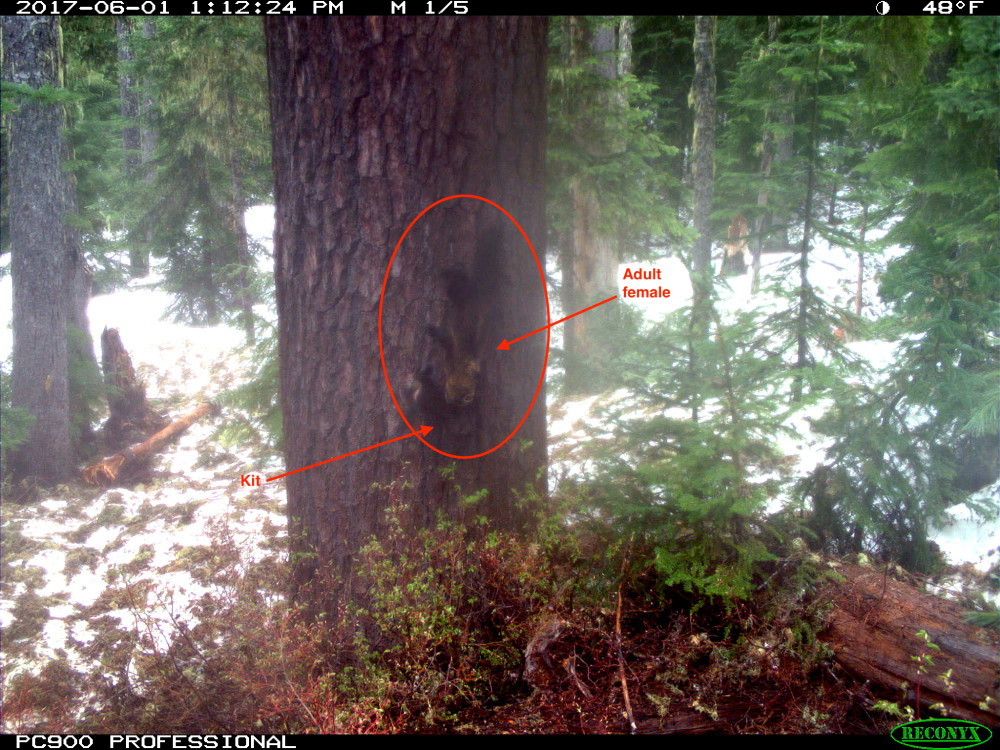The twin-prop airplane banks left and crests a crooked ridgeline of the Cascade mountain range. Inside, Jeff Lewis cups his headphones firmly to his ears.
He’s listening for the sound of a rare animal — one that hasn’t been seen in these mountains for more than 70 years.
“We’re getting a boomer now,” he says, as a faint beeping sound pulses steadily over a wall of radio static. “It’s pretty special when you find one of these animals and it’s alive.”
The animals are fishers — sleek, furry, forest-dwelling relatives of weasels, mink and otters. For Lewis, hearing the sound of one of their tracking devices is a long-awaited reunion. Two years ago, he brought them here.
In the early 1900s, the fisher disappeared from the forests of the Pacific Northwest, including the Cascades. So Lewis led a group of scientists in an effort to re-establish the population. Now, he’s searching for clues to find out whether the effort worked — whether these fishers will give rise to a new generation of tree-climbing mountain weasels, or succumb to unfamiliar terrain.
“We’re putting them to the test,” says Lewis, a biologist for the Washington State Department of Fish and Wildlife. “I’m Jonesing to get out there and make sure they’re doing well.”
Long before there were wildlife management agencies to protect animals like the fisher from extinction, fur trappers exploited them for their pelts. They were eliminated from large swaths of their home range along North America’s Pacific coast — from Northern California to British Columbia — and parts of the U.S. Midwest and Northeast.
Despite multiple attempts by conservation groups to seek federal protections for the animal under the Endangered Species Act, the U.S Fish and Wildlife has denied the West Coast fisher’s status as a threatened species. Washington listed it as an endangered species in 1998.
Following the lead of successful recovery plans in other parts of the country, nonprofit Conservation Northwest hired licensed trappers to collect fishers in British Columbia. The animals were then transported in wooden boxes to Washington and set them loose on their former habitat.
The project began in 2008 on Washington's Olympic Peninsula. In 2015, the group took its campaign to the South Cascades, releasing 69 of them.

Lewis’s task now is to find out whether the population is sustaining itself. After collecting clusters of GPS coordinates from the plane, he joins a team of other scientists in a ground search for one of the fishers.
They trudge through the snow in early June in search of a den for fisher F-23, nicknamed Lilly.
Their goal is to track Lilly to a specific tree and set up motion-sensored cameras. It’s one of the few ways to document whether she’s raising young — a critically important step in her species’ repopulation of its historical range.
The group of scientists has been through this routine a dozen times in the past few weeks. Denning season only lasts two months and after the window closes the fishers will be on the move, criss-crossing the landscape in search of food.
Today, Lewis follows the tracking signal on his handheld receiver to a clearing and hears an animal scrambling out of a tree.
“I heard a scratch, scratch, scratch, and then it was gone,” he says.
The scientists fan out among the trees, analyzing trunks for signs of fisher. They look for discolored bark where the fisher’s claws chipped off chunks of the tree. They inspect branches for tufts of fur. They find their first clue piled on a log at the base of the tree.
“They love taking poops on logs,” Lewis says, withdrawing a plastic sandwich bag from his pocket.
Looking up, he points to another promising feature: a crack near the top of the tree. It looks big enough to shelter a female fisher and her young. It’s also small enough to keep out predators like bobcats.
“It might be the den,” Lewis says, squinting up. “Or it could just be a nice hole in a tree.”
There’s one way to find out. They strap motion-sensored cameras throughout the clearing. They’ve planted these camouflaged cameras from Mount Rainier to the Columbia River, yielding few results.

One camera was set off by a branch blowing in the wind. Another revealed images of a small squirrel darting back and forth across the frame. Weeks later, one of the cameras aimed at Lilly’s den site tells a different story: The first frame shows two white dots glowing in the darkness: eyes.
“It’s basically a brown blob,” says Tara Chestnut, an ecologist at Mount Rainier National Park. She notes that it could be a raccoon. Or a baby black bear.
But the brown blob eventually reveals itself: A female fisher, running down the side of the tree. But the scientists are looking at the two dark smudges extending from its mouth against the pixelated tree trunk: a smaller fisher’s legs.
“A baby’s legs,” Lewis says.
For most people, it would still resemble a brown blob. But for these scientists, it’s the first piece of evidence suggesting that the fishers could survive in the Cascades.
It’s also encouraging sign for the next leg of the reintroduction project. They plan to release another 80 fishers in Washington State’s North Cascades next year.
“It doesn’t mean it’s ultimately successful, but it’s a step in the (right) direction,” Lewis said.
And, for the Pacific Northwest, it may be a step backward, he says — to a wilder time in its past.




